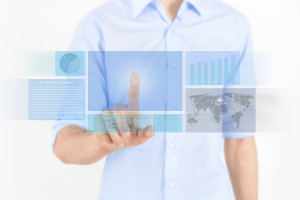 The quick service restaurant industry is proving to be one of the fastest growing markets for digital signage. These types of restaurants are using the technology to create digital menu boards and self-service kiosks as well as other applications customers can interact with. Integrating digital signage with a restaurant’s point of sale (POS) software makes it even easier to use – not to mention more functional.
The quick service restaurant industry is proving to be one of the fastest growing markets for digital signage. These types of restaurants are using the technology to create digital menu boards and self-service kiosks as well as other applications customers can interact with. Integrating digital signage with a restaurant’s point of sale (POS) software makes it even easier to use – not to mention more functional.
The pairing of your POS software and digital signage starts with the customer. In this day and age, the average consumer enjoys feeling connected, whether the connection is to a person or a restaurant. As a result, the interactivity that digital signage brings to the table can be huge for restaurants. Consider the following ways your POS software and digital signage can work together:
1. Real-time updates: One of the great things about digital menu boards is that they can be updated at any time. They can show menu items that are out of stock, different menus based on the time of the day, and special promotions or discounts. All of these things can be controlled by POS software, and they can be handled onsite or remotely. Staff members can utilize an iOS or Android app to get the job done while on the move.
Not only do digital menus save time and labor, they also ensure that customers have up-to-the-minute information about what is on the menu. Real-time updates also keep employees and customers on the same page about what is available. Ordering something only to have the employee return and tell you it’s all gone is disappointing.
2. Upsell: Depending on the order entered in a POS system, digital signage can be used to display complimentary menu items, often leading to larger orders. Asking a customer to upgrade a meal or add a side is one thing, but showing the customer on a screen is another. Having a picture to go along with the name can make it seem more enticing to customers. Static menu boards also tend to fade with time and may have lower quality images. Digital menus can display high definition pictures and videos, which make menu items look more impressive and desirable.
3. Entertain: Another benefit to having digital signage is that changing pictures or media can engage and entertain customers. Static menus simply don’t have that ability. The longer customers look at your menus, the more in-tune they are with your brand and your products. A screen that displays entertaining facts or trivia can actually shorten the perceived wait time for customers in line. Waiting in long lines is not fun, and lines often cause customers to have a bad/negative experience. Providing customers with entertainment should lead to fewer complaints for employees to respond to.
Digital signage can be used in quite a few ways – all of which lead to a better experience for customers and employees alike. The ability to instantly convey information to customers is more important than ever. Integrating digital signage with POS software takes that engagement to new levels, giving restaurateurs yet another means of polishing their customer service image and enhancing their profitability.






